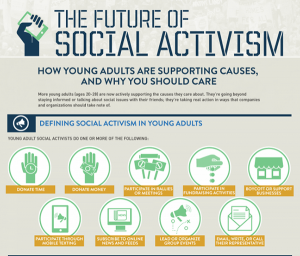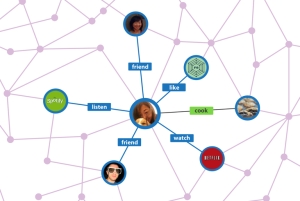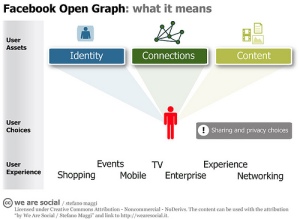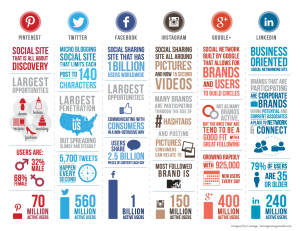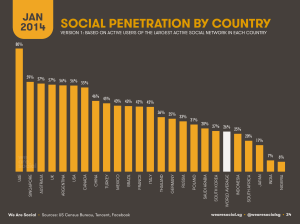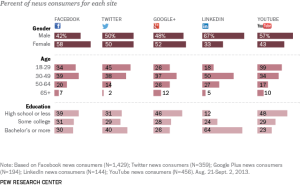Selecting the best way to measure the success of a social media action depends on your objectives when embarking on said action. Do you want to elicit a specific action (such as signing up for a website)? Do you want to get to know your audience (by having them answer questions or take part in a discussion)? Do you want your content to get seen by as many people as possible (sharing posts or referencing them in other sites)?
But in more general terms, without considering the specific objectives of a social media action we can grasp the reach of posted content in a few ways, they can be used in a more general approach but they rapidly become specific to your objectives on your social media interactions. In other words, you intentions determine the metrics that will tell you the most about your success in achieving your goals. With that in mind let’s look at a few metrics that are out there.
From Social Media Examiner we can select these tools: In a social strategy content is very important, so you should always look at the content you are putting out there and use “an editorial calendar” to keep track of the ideas you are posting about and in what sequence you intend to do so. They suggest keeping a table of your blogs content posts together with a few indicators (say using Google Analytics) of how each post performed in readership and comments. That way you can know what interest your readers more and what got you more responses and use this information to create future content. I would add that keeping a table of your intended future topics is also useful and you should revise it daily and track current ideas on these topics (using, say, Google Alerts on keywords) to see what’s relevant and if your intended topics are “hot subjects”.
From Forbes I would select this important quote: “Rather than being a ‘stock media’, where the number of impressions represents the main outcome, social media is a “flow media”, defined by the depth and breath of relationships between brands and various stakeholders”. That is to say that a lot can be said in social media success by looking at the quality of the interactions between poster and reader. Let’s call it the quality vs. quantity approach, which is quite a shift if you consider most marketing measures that place a lot of emphasis on the number of people that saw a given message. Of course marketing looks into results from those viewers, how many bought a product or participated in a contest, but it assumes that the more people you have reached in the first place will determine how many people you are able to engage. As in, the variables increase together (reach and activation). What Forbes brings to the table is the notion that the quality of the interaction is more important than the number of people you were able to engage in the first place, that is an interesting idea. Their idea of measures to access this information would include: “How many comments do the social assets receive everyday? How many of them are being replied to? What is the social sentiment of the brand? What kind of responses or feedback on your posts/photos/videos/infographics (for example, thank-you messages, messages of encouragement, positive shares, etc).
To illustrate how making the most of what little (fan base or audience you have) Forbes references the case of Pret-a-Manger: “Despite having a smaller community than its competitors, the brand has focused its efforts on responding effectively to customers, offering great value and exclusive discounts to their community and turning community-sourced recipes to actual products. Pret A Manger even shared the story of how its coffee is grown. The company’s content clearly reflects the brand’s positioning around creativity, passion for fresh food and good humor. This has resulted in a Facebook “People Talking About” score of 1.39 percent (which means 1.39 percent of people who saw a post reacted to it by talking about it or sharing it), while most Facebook pages typically score below 1 percent”.
Facebook offers great tools to grasp social media interaction stats, as illustrated in the example above. Their measure of “People Talking About” can be quite an useful tool to provide content publishers with insights about their audience’s behavior and tastes.
Idealware adds a few interesting blog tools to the mix: Booshaka builds intelligence about your social media contacts (namely from Facebook which is the platform they manage) helping you provide content that engages them and Klout helps you discover content that your audience (on Twitter and Facebook) hasn’t seen yet and also tracks the impact of your content. They also mention a few professional tools (more expensive) that allow business to track all their interactions with clients creating a “marketing cloud” of information.
Sentiment tracking, something that tools like Hootsuite allow you to do, can help social media posters understand how people feel about the content they post and the companies they post about. This is a tool that is increasing in relevance fast because it goes beyond tracking the life cycle of a post and its performance, it effectively create a knowledge base of interactions separated by the feeling (negative, positive and neutral) they create.
Social media measurement is not only an interesting and rich topic but also an increasingly fascinating one. As technology evolves and becomes more sensitive to the nuances of words and postings I’m sure we will see many more interesting measuring tools come to the forefront.
Sources: http://www.socialmediaexaminer.com/metrics-improve-social-media-marketing/#more-69955
http://www.idealware.org/articles/few-good-tools-measuring-and-monitoring-social-media











